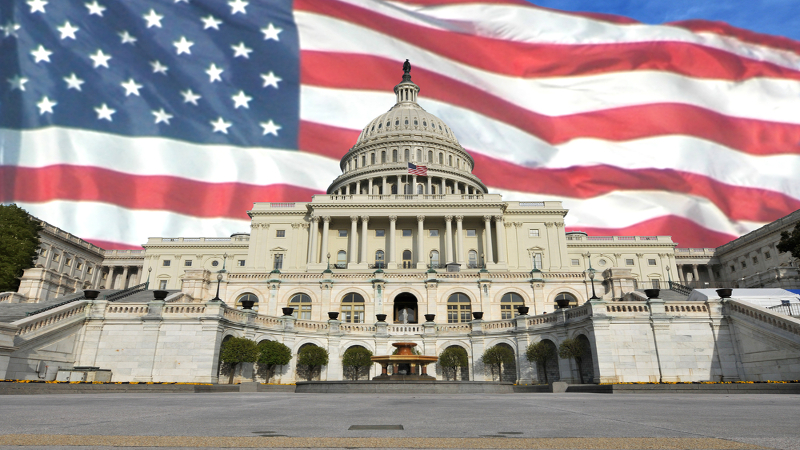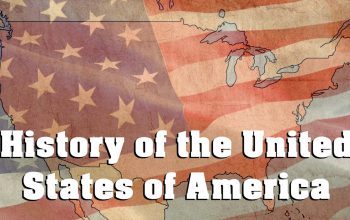The intricate interplay of U.S. Government and Politics, and the course of history has shaped the United States into the democratic powerhouse it is today. From the framers of the Constitution to the current political landscape, the United States has undergone a fascinating evolution, marked by the ebb and flow of power, the crash of ideologies, and the resilience of democratic principles.
Table of Contents
ToggleFoundations of Governance
The U.S. government is rooted in the principles set forth by the Founding Fathers in the Constitution. This foundational document establishes a federal system, delineating powers between the national government and individual states. The three branches – legislative, executive, and judicial – provide a system of checks and balances, ensuring no single entity accrues unchecked power.
Politics and Representation
At the heart of American politics lies the concept of representation. The House of Representatives, with its members elected from specific districts, is the embodiment of direct representation, reflecting the needs and interests of local communities. The Senate, representing states, ensures a balance between large and small states. This intricate system fosters a dynamic political landscape, where the diverse voices of citizens are woven into the fabric of policymaking.
Elections and the Democratic Process
Elections are the lifeblood of American democracy, serving as a mechanism for citizens to choose their representatives. The electoral process, involving primaries, caucuses, and general elections, is a testament to the participatory nature of American politics. The diversity of candidates and political parties adds vibrancy to the electoral landscape, allowing citizens to engage with a range of perspectives.
The Role of Political Parties in U.S. Government and Politics
Political parties play a pivotal role in shaping the course of American politics. The two major parties, Republicans and Democrats, represent different ideological stances and policy preferences. These parties serve as a conduit for political activism and provide a platform for candidates to garner support. The influence of parties extends beyond elections, permeating the legislative process and policy formulation.
Presidential Power and Influence
The presidency holds a central position in the U.S. government, with the President serving as the head of state and commander-in-chief. The presidency, as exemplified by figures like Donald Trump, has the power to shape national discourse and policy. However, the system of checks and balances prevents any one branch from wielding disproportionate influence, ensuring a delicate equilibrium in the exercise of power.
Constitutional Rights and Liberties
The U.S. Constitution enshrines the rights and liberties of citizens, providing a framework for the protection of individual freedoms. The Bill of Rights, a cornerstone of constitutional law, guarantees essential rights such as freedom of speech, religion, and assembly. These constitutional safeguards underscore the commitment to protecting citizens from government overreach, fostering a society where diverse perspectives can thrive.
The Evolving Landscape of Representation
The history of American government and politics is marked by an ongoing struggle for representation. Over the centuries, marginalized groups, including women and African Americans, have fought for their rights and inclusion in the political process. The women’s suffrage movement and the Civil Rights era stand as testament to the resilience of the American spirit, driving progress toward a more inclusive democracy.
Local Government and the Power of the States
While the federal government holds a pivotal role, the power of states in the U.S. political system should not be overlooked. States, like New Hampshire, serve as laboratories of democracy, experimenting with policies that reflect the preferences of their citizens. The diversity in state governance adds depth to the overall American experience, allowing for a tailored approach to addressing local needs.
Taxation and the Role of Government
The power of the U.S. Government and Politics to levy taxes is a critical aspect of its functioning. Taxes fund essential services, infrastructure, and public programs. The ongoing debate over tax policies reflects a fundamental question about the role of government in society – striking a balance between providing necessary services and ensuring the economic freedom of citizens.
The Judicial Branch and the Courts
The judiciary, embodied by the Supreme Court, plays a crucial role in interpreting the Constitution and ensuring the rule of law. Landmark decisions throughout history, such as Brown v. Board of Education and Roe v. Wade, have shaped the social and political landscape. The courts serve as a bulwark against potential abuses of power, upholding the principles of justice and equality.
Challenges and the Resilience of Democracy
The course of U.S. government and politics has not been without its challenges. From economic crashes to divisive ideological clashes, the nation has weathered storms that tested the strength of its democratic institutions. The ability of the system to adapt, evolve, and self-correct highlights the resilience of American democracy in the face of adversity.
Conclusion
As students of government and politics navigate the complexities of the U.S. political landscape, they engage with a living history that continues to unfold. The dynamics of power, the representation of diverse voices, and the ongoing pursuit of a more perfect union remain at the core of the American experiment. The U.S. government and politics, a tapestry woven through time, reflect the enduring commitment to democracy and the ever-evolving quest for a more just and equitable society.








